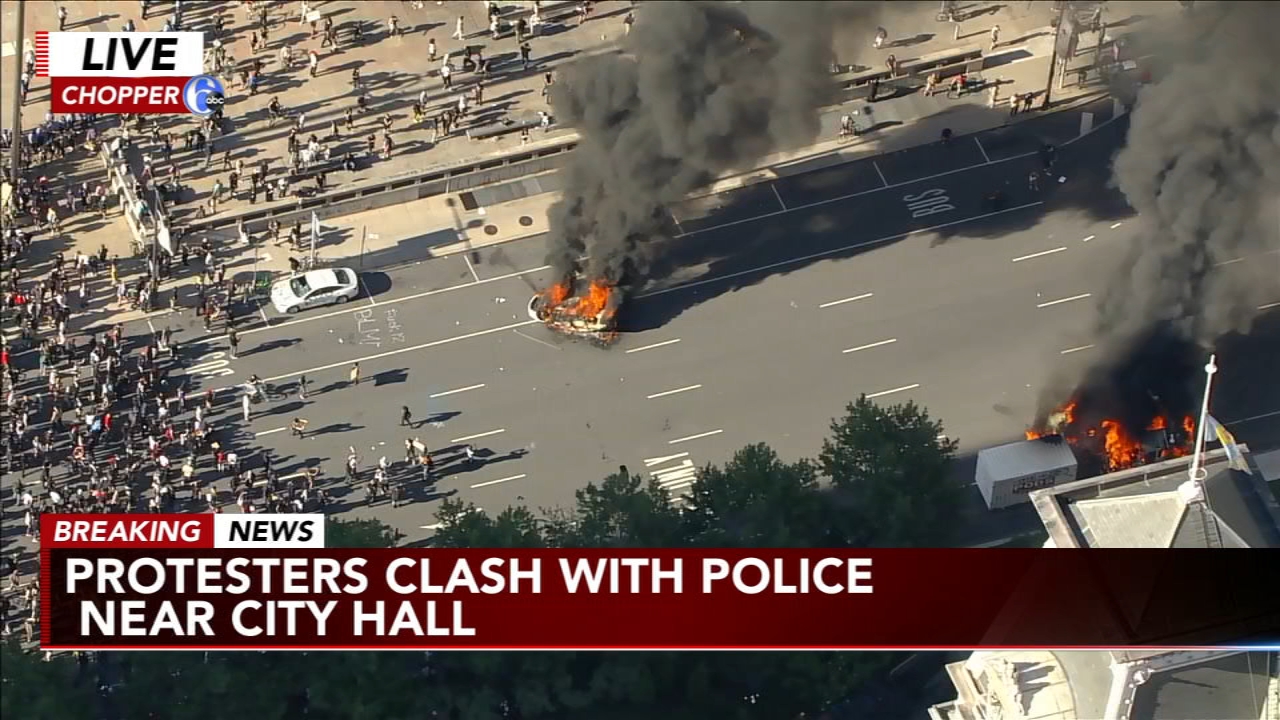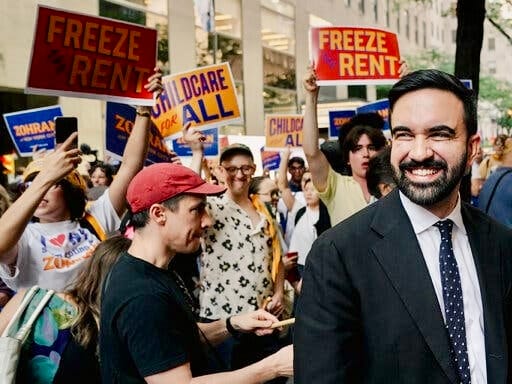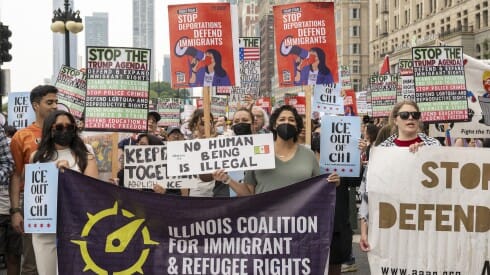Controller gets the blame game almost right
In a harsh assessment of the city’s actions last spring during the George Floyd protests, City Controller Rebecca Rhynhart correctly lays the blame at the feet of Mayor Jim Kenney, but gets it partially wrong on the use of police force.

The force mentioned by the report says tear gas was authorized by Police Commissioner Danielle Outlaw, and it was excessive.
Yes on authorization and no, in part, on it being excessive.
After the riots and looting in Center City, West Philadelphia, Port Richmond and elsewhere, which occurred during the protests and may be viewed as separate from it, City Council awoke from its slumber to prove it is still woke, and detached from reality.
In October, it passed a ban — the first by any U.S. city — prohibiting “nonlethal” police tactics, such as tear gas, pepper spray, and rubber bullets.
Police used such tactics against protesters (and bystanders, who were collateral damage) in West Philadelphia on May 31, and again on June 1 during an illegal takeover of Interstate 676 in Center City.
In sponsoring that bill, chief Council harridan Helen Gym said, “In banning the police use of less lethal munitions in response to demonstrations, we are answering the calls of our constituents.”
She did not say which constituents. I don’t think she meant shop owners who were firebombed or looted. Nor did the shrieking genius offer alternatives to tear gas, nor comprehend that when nonlethal tactics are wrenched from police hands, that leaves either a) lethal force, or b) retreat.
Is retreat an acceptable tactic in the face of mob rule? Do I hear any calls for Defund the Mob?
You have a protest situation that is getting out of hand. The police give lawful commands — to break it up, move along, whatever — that are disobeyed. What do you do — give them a time out? How about a “good talking to”? Tell them “wait until Daddy gets home”? Shrug and walk away?
Any lawful use of force can be used to excess, and that should be prohibited. But since police commanders gave the order to use tear gas, officers on the ground must not be punished for employing it.
This is not a case where officers should have recognized an unlawful order. The tactics employed are legal almost everywhere.
A summary accompanying the 75-page report, in stating the obvious said, “The investigation found the city failed to sufficiently plan for the unrest, which led the city to overcompensate for the lack of planning with excessive force, such as deploying tear gas,” which hadn’t been used since the 1985 MOVE confrontation, in which 11 people died and a city block was destroyed.
Under riot conditions, tear gas is appropriate, and superior to beating people with batons, which can cause serious injury. When faced with a mob, which has its own psychology, what do you expect police to do?
“While top city officials stated that there was no way to plan for what happened, that’s not true,” said Rhynhart. “A blueprint for maintaining peace during large events and protests did exist and if it had been followed, many of these failures could have been avoided.”
The lack of planning — the responsibility of the mayor, the police commissioner and the managing director — had “cascading negative consequences,” the report said.
The controller’s office used the top-flight Ballard Spahr legal firm to investigate facts, review records and interview city leaders, police staffers and civilians.
Employing his imperial self, Kenney set unrealistic conditions, such as demanding all questions in advance, and was not interviewed.
The report also criticized the disparate response of police to anti-police crowds, such as in Center City, and pro-police crowds, such as in Fishtown. The differing response is understandable, but not acceptable. It is one law for everyone.
The city’s failure was not only of leadership, but of imagination. City leaders, for some reason, did not believe protests would be as bad in Philly as they were in some other cities. That magical thinking probably explains why the National Guard was not requested until after Philly had sustained riots and looting.
A spokesman for the mayor denied that he and his team failed to exercise leadership and the sun arose in the west this morning.
Following is a summary of the major findings of the report.
***
The city failed to sufficiently plan for the protests and civil unrest: Despite extensive experience responding to large-scale events, the city did not utilize the existing blueprint for effectively responding to such events. This resulted in an inadequate response to both the demonstrations, as well as the looting and destruction of property. For example, the city received information about civil unrest occurring throughout the country as early as May 26th. However, the investigation found that it was widely believed that the events in Philadelphia would not deteriorate the way they had in other cities. On May 29th, one day before the first major protest in Philadelphia, the Office of Emergency Management contacted the Police Department about activating the Emergency Operations Center. At that time, OEM was told that EOC activation would not be necessary.
Failure of leadership at the highest levels of key city departments/agencies, coupled with organizational deficiencies and personnel vacancies, affected the city’s response: The investigation identified several examples of a lack in leadership having a negative impact on the city’s response. Specifically, the investigation found that the fire commissioner, who currently serves as the OEM director, viewed OEM’s role in a more limited fashion than past independent directors, which may have contributed to the lack of leadership exhibited in planning for the unrest. The investigation also found that the police commission had left the position of inspector of homeland security, which had historically played a key role in responding to civil unrest, vacant since March 2020. And the managing director, who the fire commissioner/OEM director and police commissioner report to, stated that he did not believe there was a way to plan for the civil unrest that occurred, despite a blueprint existing from past practices of the city. Additionally, the investigation states that pursuant to the city’s Emergency Operations Plan, the ultimate responsibility for any city response lies with the mayor. As such, the mayor himself did not demonstrate the leadership that was required of him during the unrest.
The city failed to dedicate sufficient resources to its response: The city’s failure to plan appropriately or demonstrate the leadership required, resulted in insufficient resources and strategies throughout its response to the unrest. On May 30th, for example, the city did not have the manpower or transportation necessary to address widespread looting and vandalism in Center City. The investigation also found that the city appeared to compensate for its lack of planning by using increased and unnecessary force, including the deployment of CS gas and other less-than-lethal munitions.
The police department inappropriately used CS gas in its response: The investigation found that the use of force, particularly CS gas, throughout the unrest was inappropriate. CS gas had not been used in Philadelphia for crowd control or First Amendment activity since the 1985 MOVE bombing. However, as detailed in the report, CS gas was used several times, in several locations during the unrest. On 52nd Street in particular, CS gas was used indiscriminately on a half-mile area, affecting bystanders and peaceful protesters, in addition to those engaging in illegal activity.
The police department had disparate responses to protesters: The investigation found that the police department’s approach to responding to protesters gathered in opposition to police brutality versus groups claiming to gather in support of police or a statue were inconsistent. For example, in Fishtown, a group of mostly white men carrying baseball bats and golf clubs were not met with the same force by police as those gathered on 52nd Street or I-676.



